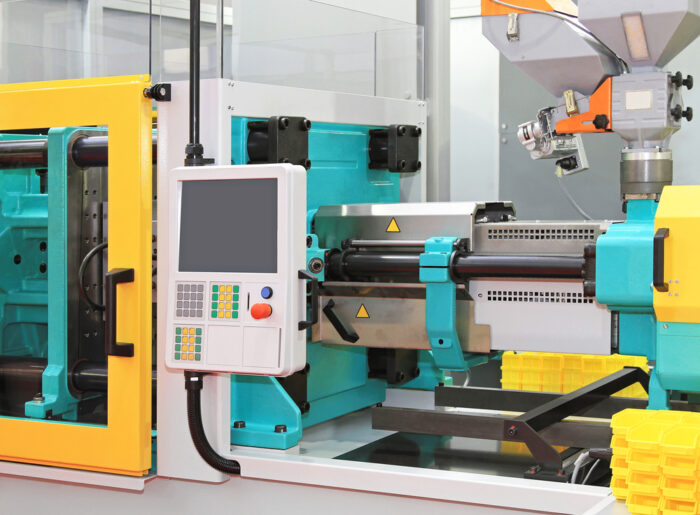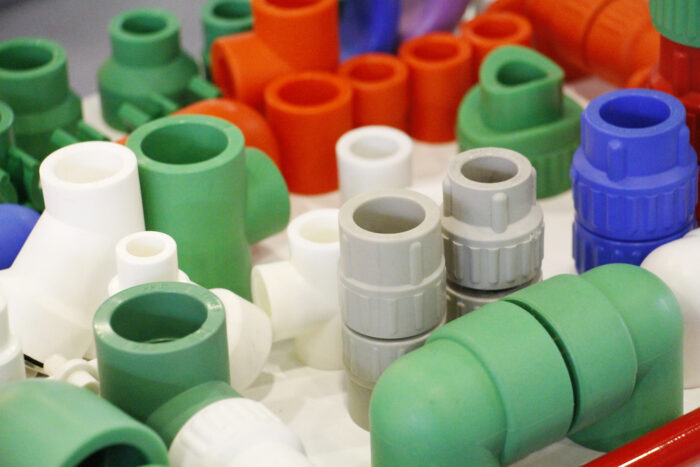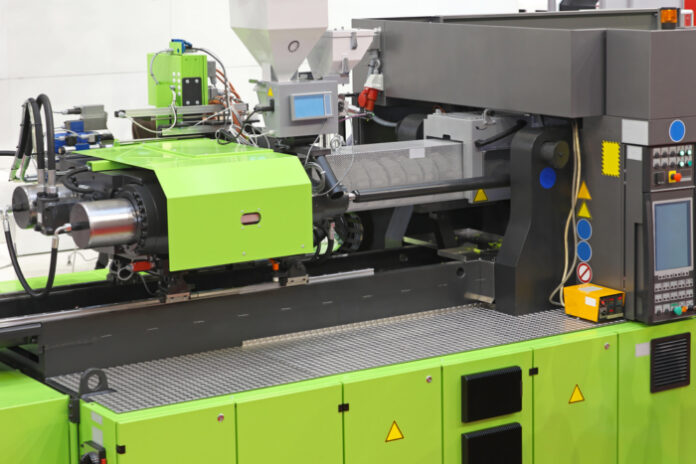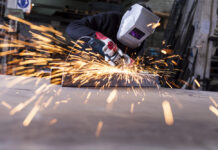A manufacturing technology for producing large quantities of items is called injection molding. Its operation frequently consists of placing molten materials into a mold for mass production of similar goods. Metals, glass, elastomers, confections, and, most commonly, thermoplastic and thermosetting polymers can all be used in injection molding. Moreover, materials can be mixed to produce various qualities and effects in the finished products.
How it Works
Injection molding services works in steps. The first step is creating the mold, which finely fits for the features of the product or part manufactured. In the second step, the material feeds into a heated barrel and melts by heating bands. Thirdly, the molten material feeds into the mold cavity, where it cools and hardens to match the mold’s shape. Cooling lines circulate water or oil from an external temperature controller to reduce cooling time. Finally, mold tools attach to plate molds called “platens.” These open once the material sets, and ejector pins remove the product or part.
Types of Molds
Molds have a single cavity or multiple cavities that contain identical pieces in each cavity. Alternatively, each cavity can be unique to make different parts. Molds made of aluminum are not suitable for mass manufacturing or for some parts, due to their poor mechanical qualities and wear, distortion, and damage caused by the process. Steel molds have greater durability, but are more expensive.
Considerations
Injection molding requires a precise design. This encompasses the shape and features of the product or part, the materials, and the machine’s properties. As a result, there are numerous considerations to take into account. Before beginning injection molding, consider the following:
1. Money
With expensive machinery and molds, entry costs for injection molding manufacture can be significant.
2. Production Volume
Know how many pieces you intend to produce to assess whether this is the most cost-effective production process.
3. Design Elements
Another consideration is making injection molding easier by reducing the number of parts and simplifying the shapes. The design of the mold tool is critical for preventing faults during production.
4. Manufacturing
Using machines with hot runner molds and well-thought-out tooling reduce production cycle time. In addition, they can result in significant cost savings for your parts, especially if you produce thousands or millions of them.
How to Cut Injection Molding Costs
Injection molding can be a costly procedure; however, there are various techniques to cut costs, including:
- Removing undercuts;
- Removing extraneous features;
- Using the core cavity method;
- Reducing cosmetic finishes;
- Creating self-mating pieces;
- Modifying and reusing existing molds;
- Monitoring DFM analysis;
- Using a multi-cavity or family mold; and
- Changing part sizes.
When to Use Injection Molding
Injection molding creates extensively used products such as bottle tops, remote control casings, and syringes. It also produces larger products, such as automotive body panels. However, it is most employable when producing thousands or millions of identical parts from a single mold.
Types
One type of injection molding blends separate materials in one part of a two-shot mold. This technique provides plastic products with pleasant touch, adds colors to a part, or creates products or parts with distinct performance features.
The following are other types of injection molding:
- Cube shaping;
- Die Casting;
- Gas-assisted;
- Liquid silicone rubber;
- Metal;
- Microinjection;
- Processing by reaction; and
- Thin wall.

Advantages
The ability to scale up production to manufacture a huge number of pieces is the primary advantage of injection molding. After covering the early expenditures of design and molds, the cost of manufacturing is relatively low. The cost of production lowers with the more parts produced.
Injection molding also produces less waste than traditional production procedures, such as CNC machining, which removes superfluous materials. Regardless, the process generates waste, primarily from the sprue, runners, gate positions, and any overflow material that flows out of the part cavity (also known as “flash”).
Finally, injection molding is advantageous for enabling the creation of multiple identical parts. This improves part reliability and consistency in high-volume production.
Disadvantages
While injection molding has many advantages, it also has several disadvantages. First, injection molding can have large upfront expenditures, particularly for tools. One constructs a prototype before manufacturing any pieces. After accomplishing this, a prototype molding tool must be built and tested. This all takes time and money, and it may be an expensive procedure.
Secondly, Injection molding is unsuitable for creating huge pieces in one piece. This is due to the size constraints of the machines and mold tools. Items that are too large for an injection molding machine manufacture in many parts and then assemble.
Finally, extensive undercuts necessitate professional design. This can result in additional cost to your project.

Applications
Injection molding has a variety of applications that require a predictable manufacturing process. Wire spools, packaging, bottle caps, toys, combs, musical instruments (and components), seats, tiny tables, storage containers, mechanical parts, and automobile parts and components are examples of manufactured objects. It is the most prevalent process for producing plastic parts, especially in large quantities.
Is it Safe for the Environment?
As technology grows more efficient and materials such as thermosetting polymers can survive high temperatures and conditions, injection molding is becoming more ecologically friendly.
Although there is some material waste with injection molding, it is significantly less than in many other manufacturing techniques. Of course, the specific materials used impact the environment in terms of their duration, their makeup of recycled resources, and their method of disposal. There are other considerations for the carbon footprint of items over their whole life cycle, including manufacturing.
Modern injection molding machinery uses between 20 and 50% less energy than it did ten years ago, thanks to advancements in technology.
Final Words
Injection molding has numerous manufacturing applications, particularly for making high-volume products. While tooling and molding can be costly, the cost of production once done is inexpensive. The process is utilized for parts made of a variety of materials, since it allows for the production of almost similar parts.
Find a Home-Based Business to Start-Up >>> Hundreds of Business Listings.

















































